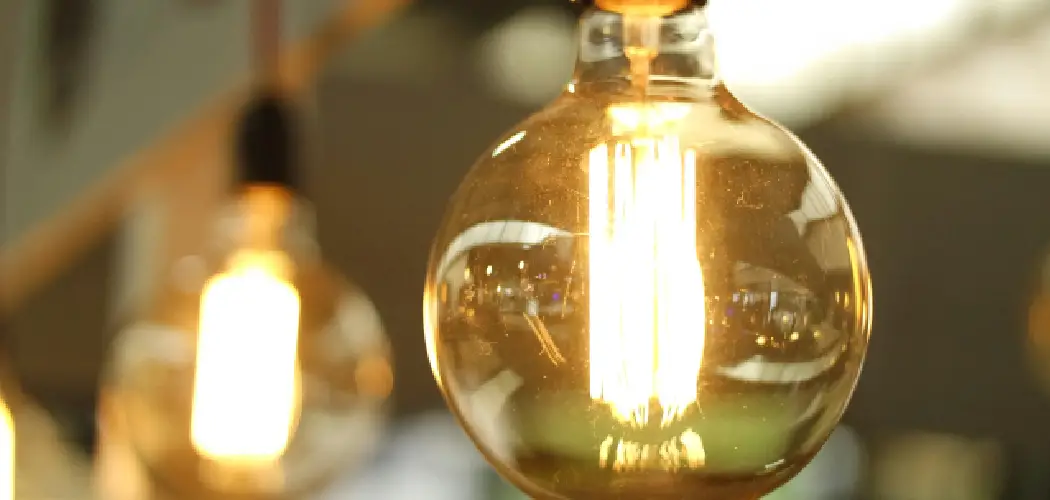Light bulbs are an essential source of light in our homes and offices. However, sometimes, they can be too bright for certain situations, like when you need a dimmer ambiance or when working on a project that requires more focused lighting. Luckily, there are various ways to adjust the brightness of your light bulb without having to replace it.
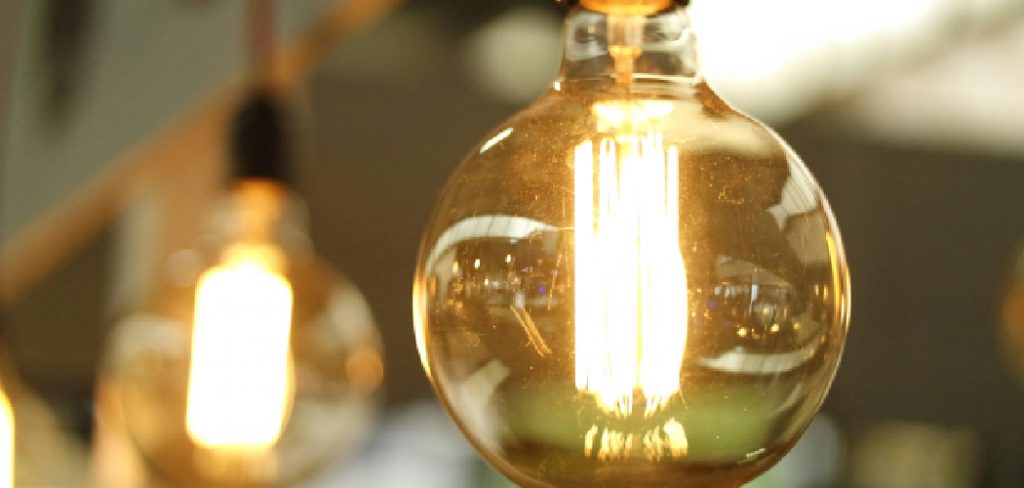
The invention of the light bulb revolutionized the world, providing a reliable and convenient source of light. However, sometimes, the brightness of traditional light bulbs can be too intense for specific situations or personal preferences. In this guide on how to make a light bulb less bright, we will discuss some simple ways to make a light bulb less bright.
Necessary Items
Before we dive into the methods, it’s essential to gather the necessary items for adjusting the brightness of your light bulb. These include:
- Dimmer Switch: This is a device that can be installed on your wall or used as an adapter between the bulb and socket.
- Lamp Dimmer: Similar to a dimmer switch, this device can be attached directly to your lamp’s cord.
- LED Bulbs: If you are using traditional incandescent or halogen bulbs, consider switching to energy-efficient LED bulbs. These have built-in dimming capabilities and can be adjusted with a regular dimmer switch.
- Lampshades: This may seem obvious, but simply adding a lampshade to your light fixture can reduce the brightness of the bulb.
8 Things to Know Before You Start
Before you start making your light bulb less bright, here are some essential things to keep in mind:
1. Make Sure the Bulb is Compatible With a Dimmer Switch
Not all bulbs can be dimmed, so make sure to check the packaging or consult with a professional before purchasing. If you are using traditional incandescent or halogen bulbs, make sure they are dimmable. LED and CFL bulbs have specific types that can be dimmed, so check the packaging for compatibility.
2. Be Careful When Using a Dimmer Switch with LED Bulbs
LED bulbs require a specific type of dimmer switch to function properly. Using the wrong type can cause flickering, buzzing, or even damage to the bulb. Make sure to check the packaging for compatibility and consult with a professional if unsure.
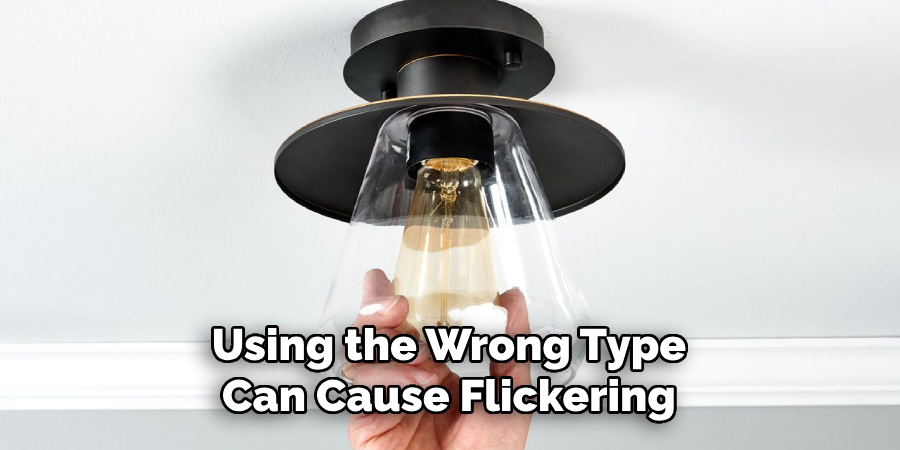
3. Consider Energy Efficiency
Dimming your light bulb can save energy and reduce your electricity bill. LED bulbs are the most energy-efficient option as they consume less power and have a longer lifespan compared to traditional bulbs.
4. Experiment with Different Bulb Wattages
If you don’t have a dimmer switch or lamp dimmer, consider changing the wattage of your bulb. Lower-wattage bulbs will emit less light and can be a cost-effective solution for reducing brightness.
5. Avoid Overloading Your Dimmer Switch
Be mindful of how many bulbs are connected to your dimmer switch. Overloading it can cause overheating or even damage the switch. While LED bulbs consume less power, it’s still essential to check the wattage compatibility.
6. Clean Your Bulbs Regularly
Dusty or dirty bulbs can reduce their brightness and affect the effectiveness of your dimmer switch. Make sure to clean your bulbs regularly to ensure maximum brightness control. Then, you’re ready to adjust the brightness using any of the following methods.
7. Use a Dimmer Switch
A dimmer switch is perhaps the most popular way to make a light bulb less bright. Simply install the switch on your wall or replace your existing one with a compatible dimmer switch, and you can easily adjust the brightness by turning the knob or pressing the buttons.
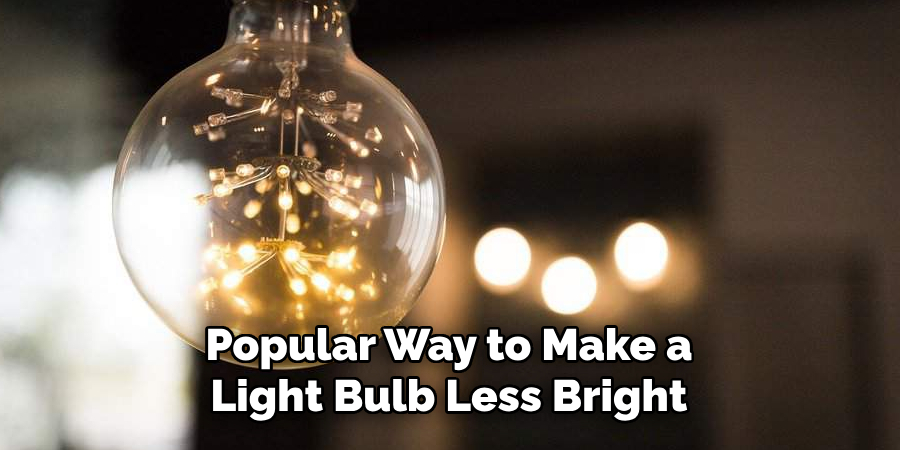
8. Try a Lamp Dimmer
Similar to a dimmer switch, a lamp dimmer can be attached directly to your lamp’s cord for easy adjustment of brightness. This is especially useful for smaller lamps or if you don’t want to install a dimmer switch on your wall.
Making a light bulb less bright doesn’t have to be a complicated or expensive process. With the right tools and techniques on how to make a light bulb less bright, you can easily adjust the brightness to your liking. Consider energy efficiency, compatibility, and safety precautions when making adjustments, and don’t hesitate to consult with a professional if needed.
Remember, proper lighting is essential for creating the right ambiance in any space. So experiment with different methods until you find the perfect level of brightness for your needs.
10 Steps on How to Make a Light Bulb Less Bright
Now that we have discussed the necessary items and things to keep in mind let’s dive into the steps for making a light bulb less bright:
Step 1: Turn Off the Power
Before making any adjustments, make sure to turn off the power supply to your light fixture. This will ensure your safety and prevent any damage to the bulb or dimmer switch. While you’re at it, take the opportunity to clean your bulbs if needed.
Step 2: Install a Dimmer Switch
If you don’t have a dimmer switch already installed, start by installing one. You can either replace your existing switch with a compatible dimmer or install a new one on the wall. Consult with an electrician if needed.
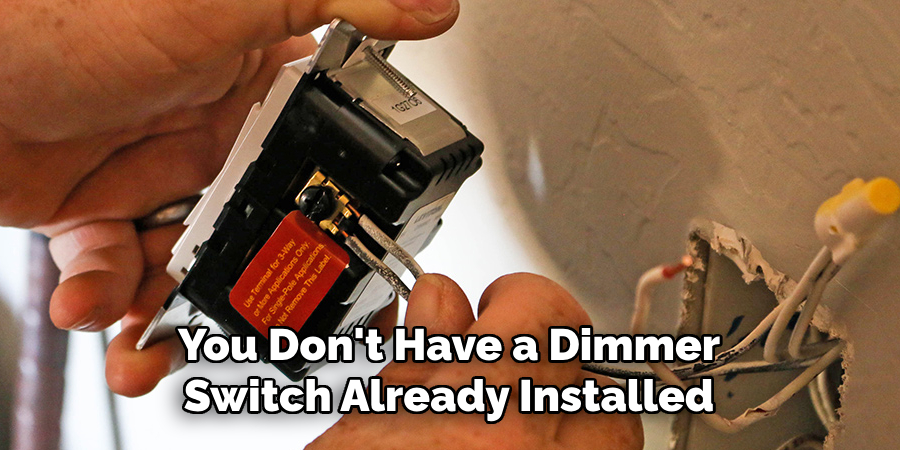
Step 3: Adjust the Dimmer Switch
Once installed, turn on the power supply and test out the dimmer switch. Slowly adjust the knob or buttons to find your desired level of brightness. Then, you can leave the switch at your desired setting and turn off the power again.
Step 4: Replace Your Bulbs
If you are using traditional incandescent or halogen bulbs, consider switching to energy-efficient LED bulbs. These have built-in dimming capabilities and can be adjusted with a regular dimmer switch. Plus, they will save energy and last longer.
Step 5: Choose the Right LED Bulb
Make sure to select an LED bulb that is compatible with your dimmer switch. Look for packaging labels such as “dimmable” or “compatible with dimmers.” If unsure, consult with a professional. So, make sure to check the packaging before purchasing.
Step 6: Install the LED Bulb
Once you have selected the right LED bulb, replace your old one with it. Make sure to follow any instructions provided by the manufacturer for installation and compatibility. While LED bulbs are energy-efficient, be mindful of the wattage and avoid overloading your dimmer switch.
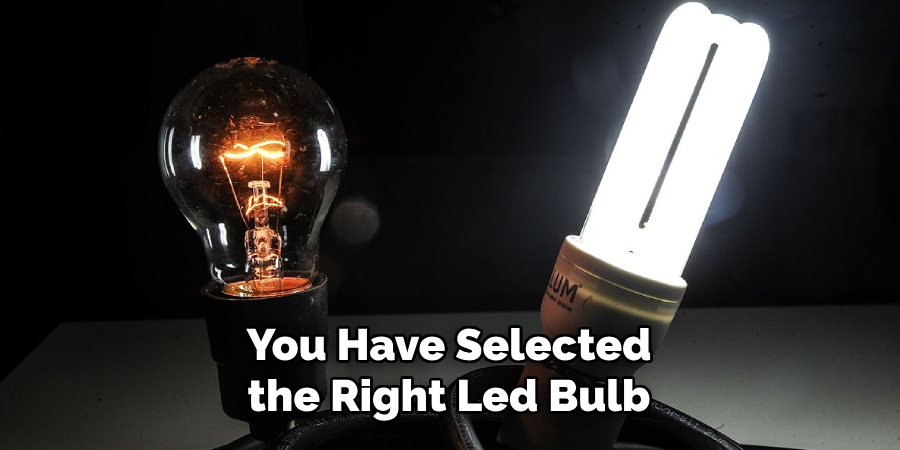
Step 7: Use a Lamp Dimmer
If you have smaller lamps or don’t want to install a dimmer switch on the wall, consider using a lamp dimmer. These can be attached directly to your lamp’s cord for easy brightness adjustment. Make sure to select a compatible lamp dimmer and follow installation instructions.
Step 8: Try Different Bulb Wattages
If you don’t have a dimmer switch or lamp dimmer, consider experimenting with different bulb wattages. Lower-wattage bulbs will emit less light and can be an affordable solution for adjusting brightness. Just make sure to check wattage compatibility and avoid overloading.
Step 9: Clean Your Bulbs Regularly
Dusty or dirty bulbs can reduce their brightness and affect the effectiveness of your dimmer switch. Make sure to clean your bulbs regularly to ensure maximum brightness control. And remember to always turn off the power before cleaning.
Step 10: Consult with a Professional
If you are unsure about making adjustments yourself or need help selecting the right tools, don’t hesitate to consult with a professional. They can provide expert advice and ensure your safety when working with electricity and light fixtures.
By following these steps on how to make a light bulb less bright, you can easily adjust the brightness of your light bulbs and create the perfect ambiance for any space. Remember to prioritize safety, energy efficiency, and compatibility when making any adjustments.
Enjoy your customized lighting and bask in the perfect level of brightness with these simple tips and techniques. So go ahead, dim those lights! No more harsh glare or excessive brightness – just a cozy and inviting atmosphere for you to enjoy.
8 Things to Avoid
While there are many ways to make a light bulb less bright, here are some things you should avoid:
1) Using a Non-Dimmable Bulb with a Dimmer Switch
This could cause the bulb to flicker, buzz, or even damage the switch. Always make sure to check compatibility before using a dimmer switch. If you’re unsure, consult with a professional. While LED bulbs are generally dimmable, not all types will work with a regular dimmer switch.
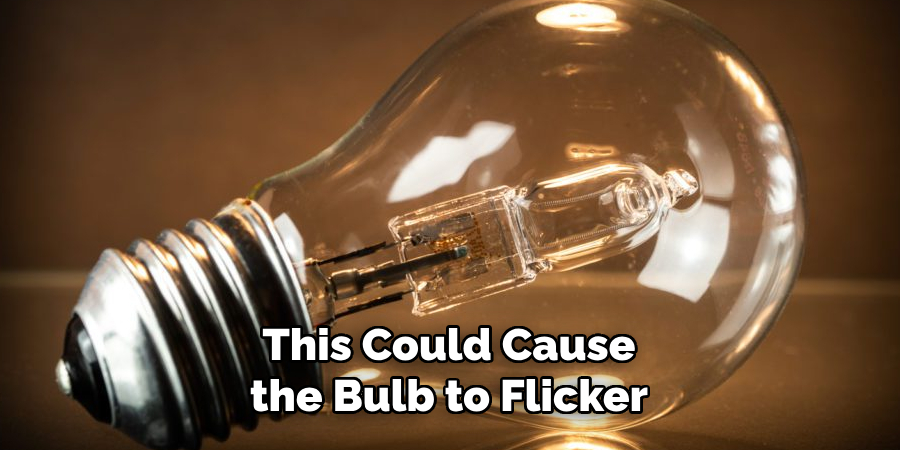
2) Overloading Your Dimmer Switch
As mentioned before, overloading your dimmer switch can cause overheating or even damage. If you’re using multiple bulbs on one switch, make sure they are compatible and within the recommended wattage limit. For LED bulbs, check the packaging for compatibility.
3) Neglecting to Clean Your Bulbs
Dirty or dusty bulbs can reduce their brightness and affect the effectiveness of your dimmer switch. Make sure to clean your bulbs regularly to keep them at maximum brightness. And always make sure to turn off the button and let the bulb cool down before cleaning.
4) Using Incompatible Bulb Wattages
Using a higher-wattage bulb on a dimmer switch meant for lower wattages can cause overheating or damage. Make sure to check the recommended wattage limit for your specific dimmer switch and use bulbs within that range. If unsure, consult with a professional.
5) Not Considering Energy Efficiency
While traditional incandescent bulbs are cheaper upfront, they consume more energy and have a shorter lifespan compared to LED bulbs. Consider making the switch to LED bulbs for long-term cost savings and energy efficiency.

6) Using Too Many Bulbs in One Space
Using too many bulbs in one space can create an overwhelming and harsh lighting effect, even when dimmed. Consider using fewer bulbs or opting for lower-wattage options to achieve the desired level of brightness.
7) Not Checking Compatibility with Existing Fixtures
If you’re using a dimmer switch or lamp dimmer, make sure they are compatible with your existing light fixtures. Some fixtures may require specific dimmable bulbs, so always double-check before making any changes.
8) Not Consulting with a Professional
If you’re unsure about making any changes to your lighting setup or need help with compatibility, it’s always best to consult with a professional. They can provide expert advice and ensure the safety and effectiveness of your dimming solution. Remember, proper lighting is essential for creating the right ambiance in any space, so it’s worth investing in professional help if needed.
Overall, dimming your light bulbs can be a simple and effective way to control brightness and create the desired atmosphere in any room. Just make sure to consider compatibility, energy efficiency, and safety precautions before making any changes.
8 Additional Tips for Perfectly Dimmed Lighting
Dimming your light bulbs can enhance the overall ambiance and mood in a room. Here are some additional tips to help you achieve the perfect level of brightness:
1) Use Multiple Light Sources
Instead of relying on one main light source, consider using multiple lamps or fixtures with dimmable bulbs. This will allow for more control over the brightness in a room and create a more layered and dynamic lighting effect.
2) Experiment with Different Bulb Combinations
Try mixing different types of bulbs, such as warm and cool-toned, to achieve the perfect level of brightness for your space. You can also opt for colored or dimmable smart bulbs for added versatility.
3) Use Dimmers with Pre-set Levels
Some dimmer switches come with pre-set levels that can be easily adjusted, making it easier to achieve your desired level of brightness. This is especially useful for frequently used spaces. If you don’t have a dimmer with pre-set levels, consider marking your preferred settings on the switch for easy reference.
4) Consider the Time of Day
Natural lighting can greatly affect how bright or dim a room feels. Consider adjusting your dimmer accordingly throughout the day to maintain a consistent level of brightness. But also don’t be afraid to use different levels of brightness for different times of day.
5) Use Dimmers in Different Rooms
Dimming your lights isn’t just limited to living spaces. Consider using dimmable bulbs and switches in other areas like bedrooms, bathrooms, and outdoor spaces for added comfort and ambiance. And don’t forget to adjust the level of brightness for different activities in each room.
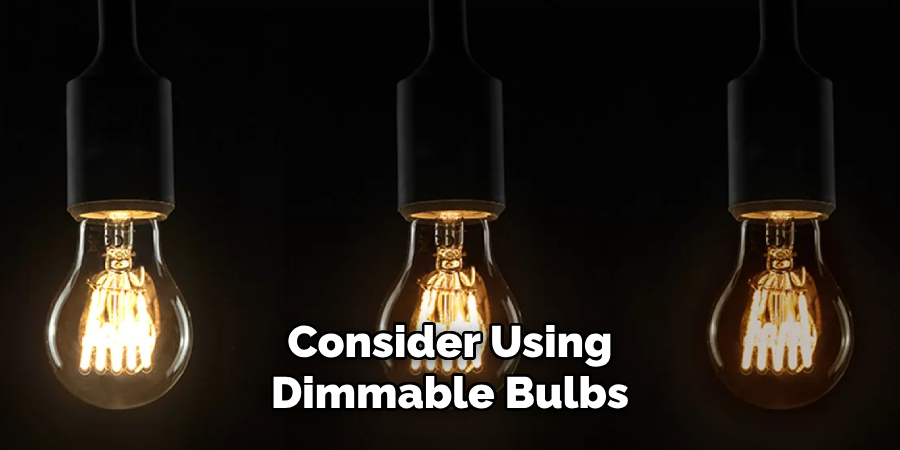
6) Use Dimmers for Task Lighting
Dimming your lights can also be useful for task lighting, such as reading or working at a desk. Consider using dimmable bulbs and lamps in these areas to provide just the right amount of focused light while reducing eye strain.
7) Use Dimmers for Energy Savings
Dimming your lights can also help reduce energy consumption and save on electricity costs. Consider dimming your lights during non-peak hours or when the room is not in use to maximize energy efficiency.
8) Don’t Be Afraid to Adjust
The perfect level of brightness may vary depending on personal preferences, time of day, and activities in a room. Don’t be afraid to play around with different dimming levels until you find what works best for you. And don’t forget to clean your bulbs regularly and check compatibility for optimal performance and safety.
Overall, using dimmers can greatly enhance the atmosphere and functionality of any space. With proper maintenance and consideration of these additional tips on how to make a light bulb less bright, you can achieve the perfect level of brightness for any occasion. So go ahead and dim those lights for a more comfortable and inviting atmosphere in your home!
Frequently Asked Questions
Can I Use a Regular Bulb With a Dimmer Switch?
It depends on the specific dimmer switch and bulb. Some bulbs may not be compatible with certain dimmer switches, so it’s always best to check for compatibility before using them together. If unsure, consult with a professional.
Can I Use Dimmable Bulbs in Non-Dimmable Fixtures?
No, dimmable bulbs should only be used in fixtures that are specifically designed for them. Using dimmable bulbs in non-dimmable fixtures can cause flickering or damage to the bulb.
Do LED Bulbs Work with Dimmer Switches?
Yes, many LED bulbs are dimmable and work well with dimmer switches. However, it’s important to check for compatibility before using them together. Some may require a specific type of dimming switch or additional wiring adjustments.
How Many Bulbs Can I Use With One Dimmer Switch?
The number of bulbs that can be used with one dimmer switch depends on the wattage and type of bulbs, as well as the maximum load capacity of the dimmer. It’s generally recommended to not exceed 80% of the dimmer’s maximum load capacity for optimal performance and safety. Again, it’s best to consult with a professional if unsure.
Can I Install a Dimmer Switch Myself?
While it is possible to install a dimmer switch yourself, it’s always best to consult with a professional for optimal safety and functionality. They can also help ensure compatibility with your existing fixtures and wiring. If you do choose to install one yourself, make sure to carefully follow all instructions and safety precautions provided by the manufacturer.
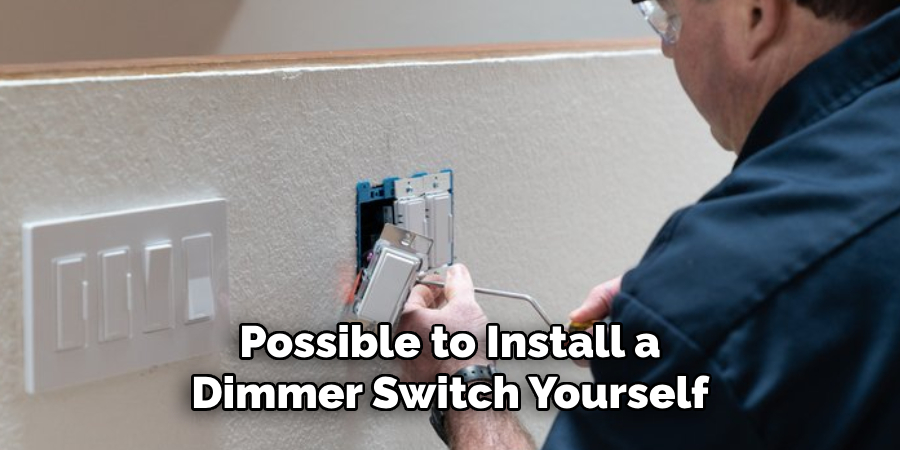
Should I Always Turn Off the Switch Before Adjusting the Dimmer?
Yes, for safety purposes, it’s always best to turn off the switch before adjusting the dimmer. This prevents any potential electrical hazards and also helps prolong the lifespan of your dimmable bulbs. So make sure to turn off the switch before making any adjustments!
Can I Use a Smart Home System With My Dimmer Switch?
Yes, many smart home systems can be integrated with dimmer switches for added convenience and control. However, it’s important to check for compatibility before purchasing a specific system or switch. It may also require additional installation steps or equipment, so consider consulting with a professional if needed. So go ahead and enjoy the benefits of both dimmable lighting and smart home technology!
Conclusion
Dimming your light bulbs is a simple and effective way to control brightness and create the desired ambiance in any room. However, it’s essential to consider compatibility, energy efficiency, and safety precautions before making any changes. Consulting with a professional can also help ensure the effectiveness of your dimming solution.
With these tips and tricks on how to make a light bulb less bright, you can achieve the perfect level of brightness in any space for maximum comfort and ambiance. So go ahead and start dimming those lights! Remember to always prioritize safety and proper maintenance to keep your lighting setup functioning at its best.

